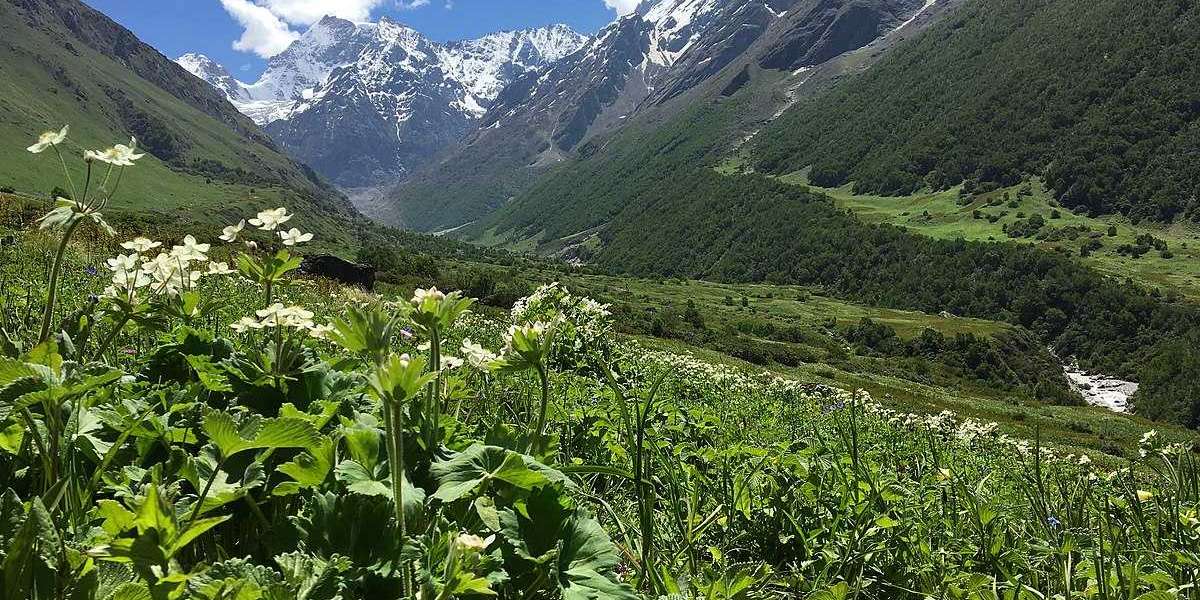Introduction
Nature has a way of enchanting us with its breathtaking beauty, and one such masterpiece of natural artistry is the Valley of Flowers. Nestled amidst the pristine landscapes of the Himalayas, this enchanting valley is a testament to the wonders of biodiversity and the harmonious symphony of colors and fragrances that Mother Earth has orchestrated. In this article, we embark on a virtual journey to explore the mesmerizing Floral Symphony of the Valley of Flowers, a UNESCO World Heritage Site and a true gem of the natural world.
The Hidden Eden: Unveiling the Valley of Flowers
Tucked away in the Indian state of Uttarakhand, the Valley of Flowers remains one of the most captivating and well-preserved floral wonders on the planet. This secluded valley was discovered by British mountaineer Frank Smythe in 1931, and it quickly gained recognition for its extraordinary variety of alpine flowers and plants. The valley, which stretches over 87.5 square kilometers, is part of the Nanda Devi Biosphere Reserve and showcases an array of vibrant blooms that paint the landscape in a kaleidoscope of hues. The Valley of Flowers trek is a popular trekking destination located in the state of Uttarakhand, India. It is renowned for its stunning meadows filled with a vibrant variety of alpine flowers and lush greenery.
A Palette of Colors: Flora and Fauna
The Valley of Flowers is a living canvas where nature expresses itself through a diverse range of flora and fauna. As you traverse through this botanical haven, you'll be greeted by a symphony of colors that seems almost surreal. The valley is home to over 650 species of flowers, some of which are found nowhere else on Earth. The endemic species include the Himalayan blue poppy, Brahma kamal, and the mesmerizing cobra lily. These flowers have adapted to the challenging high-altitude environment, evolving into unique and stunning forms.
The harmonious display of flowers is accompanied by a rich assortment of fauna. The valley provides habitat to various rare and endangered species, including the snow leopard, Asiatic black bear, and brown bear. The vibrant avian life, including Himalayan monals and pheasants, add their own melodies to the symphony. Together, the flora and fauna create an intricate and delicate ecosystem that is a testament to the interconnectedness of all life forms.
Seasonal Overture: Bloom and Beauty
The Valley of Flowers undergoes a remarkable transformation with the changing seasons. The bloom season, from late July to early September, is the crescendo of this floral symphony. During this time, the valley is blanketed with an awe-inspiring tapestry of colors as various flowers come to life. The snow and ice that cover the landscape during the colder months give way to a vibrant expanse of life, attracting botanists, nature enthusiasts, and photographers from around the world.
Each month during the bloom season brings a different chapter to the symphony. In July, the valley awakens with the arrival of blue poppies, primulas, and potentillas. August paints the scene with a burst of colors as daisies, lilies, and marigolds join the chorus. By September, the grand finale, the valley is resplendent with asters, roses, and an array of late-blooming flowers. This seasonal progression ensures that every visit to the Valley of Flowers is a unique and unforgettable experience.
Cultural Cadence: Spiritual and Historical Significance
Beyond its natural beauty, the Valley of Flowers carries significant cultural and historical importance. Local communities, such as the Bhotiya and Bhutia tribes, have revered this valley for generations. They believe that the valley is inhabited by fairies and supernatural beings, adding a touch of mysticism to its allure. Moreover, the valley finds mention in Hindu mythology as the place where Lord Hanuman found the mythical herb "Sanjeevani" to heal Lord Rama's brother, Lakshmana.
Preserving the Symphony: Conservation Efforts
As the world grapples with environmental challenges, preserving the delicate harmony of the Valley of Flowers becomes paramount. The Indian government, along with conservation organizations, has taken measures to protect this ecological treasure. The valley has been declared a national park and a UNESCO World Heritage Site, which helps regulate human activity and ensures the sustainability of this unique ecosystem.
Visitors are required to adhere to strict guidelines to minimize their impact on the fragile environment. Controlled tourism, waste management, and sustainable practices have been implemented to safeguard the valley's floral symphony for generations to come. Additionally, research and monitoring initiatives aid in understanding the dynamics of the ecosystem and the effects of climate change.
Conclusion: Nature's Magnum Opus
The Valley of Flowers stands as a testament to the boundless creativity of nature, where colors, fragrances, and life intertwine to create a symphony of unparalleled beauty. Its pristine landscapes, vibrant blooms, and rich biodiversity serve as a reminder of the intricate web of life that sustains our planet. As we explore the Valley of Flowers, we are invited to contemplate our role as stewards of the Earth and to appreciate the delicate melodies that echo through this floral haven. It is a place where nature's magnum opus unfolds, captivating hearts and minds with its everlasting charm.





